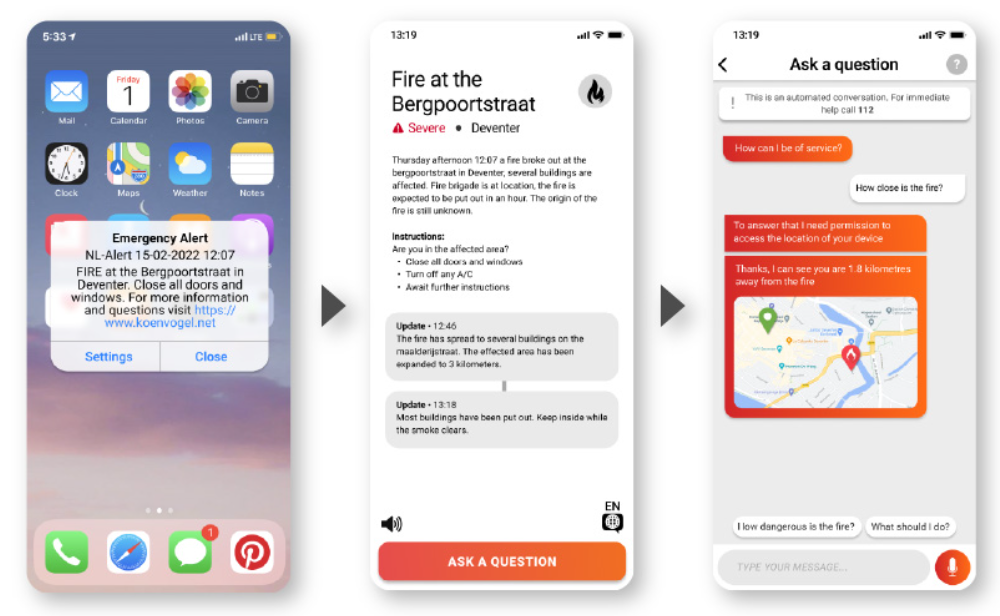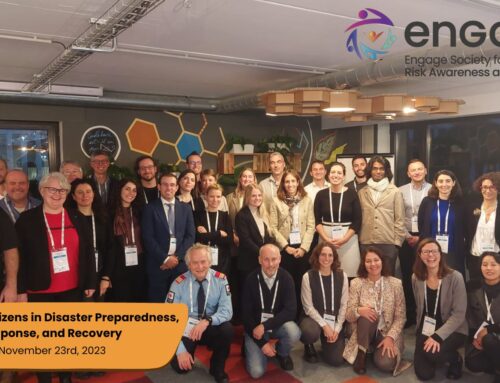This blog post outlines the opportunities that a CAP-enabled chatbot can provide for public warning within the context of increased disaster risk.
The 19th to the 21st of September our partner, Everbridge, co-hosted the Common Alerting Protocol (CAP) workshop with Alert-Hub.org CIC in Amsterdam, the Netherlands. This workshop was free of charge, and provided an opportunity for NGOs, commercial firms, technical staff, government officials, and other interested parties to learn more about emergency alerting as enabled by the CAP standard and discuss common issues.
What is CAP?
According to the website of OASIS, the Common Alerting Protocol (CAP) is a general format in which hazard emergency alerts and public warning messages can be exchanged via different networks. The CAP standard ensures that warning messages are consistent and effective and can therefore be disseminated simultaneously over many different warning systems. The content of the message itself is based on a template, which is the result of a compilation of best practices identified in academia and from real-life experiences.
What role can ENGAGE have?
Rachele Gianfranchi and Koen Vogel presented their work on a CAP-enabled chatbot prototype and posed the question: “How can we innovate and bring modern technology tools such as machine learning as a service to the community?”
In this day and age, vulnerability related to climate change and disaster risk is more prominent than ever. As a result, the European Electronic Communications Code (EECC) Article 110 requires all EU countries to operate a public warning system that can send geo-targeted emergency alerts to all mobile phone users located within the affected hazard area. Building off of these two points, Rachele and Koen discussed ways that the chatbot could streamline and simplify emergency response.
The chatbot itself is based on a blueprint developed by ENGAGE researchers Bruria Adini and Nathan Stolero from Tel Aviv University and could be used in the context of public warning to help alleviate the potential overload of call centres when an emergency occurs. For example, if a fire were to occur and an individual was far enough away from the affected area to not be in immediate danger but still wanted information, they could utilize the chatbot to receive tailored and contextual information without needing to call emergency services.
How would it work?
When an emergency or a hazard occurs, public and governmental agencies send out an alert through public warning platforms. When the message is received on the mobile phone of individuals in the affected area, they would not only receive information on the hazard’s location and instructions through the CAP protocol, but they would also receive a URL which would direct them to the chatbot server. At this point, individuals could ask questions, such as “How close is the hazard to me”, and “What steps should I take?”. Through Artificial Intelligence, the chatbot can give tailored answers about the active emergency, stored in CAP format. On top of this, the chatbot also provides accessibility features to accommodate civilians with impairments.
By providing such information to the public, a chatbot could promote the development of resilient communities as opposed to reliant communities, equipping the public with the instructions and guidance that they need in order to make informed decisions regarding the situation, and rendering them better prepared for future emergencies. The chatbot also provides an opportunity for government and public agencies to examine how well their disaster management strategies are working, as the responses and questions that individuals ask to the chatbot can be recorded and analyzed.
What are the next steps in the future of this chatbot?
The ENGAGE project will implement an exercise in Norway that will simulate a landslide- in particular, how this event will impact critical infrastructure- in which the chatbot will be tested. The exercise will take place in 2023.
You can read more about the chatbot and its’ development on our blog post, which talks about the role a chatbot can play as a first responder. The prototype can be seen in more detail on it’s website.
Authors: Alexandra Olson (EENA) and Koen Vogel (Everbridge)





